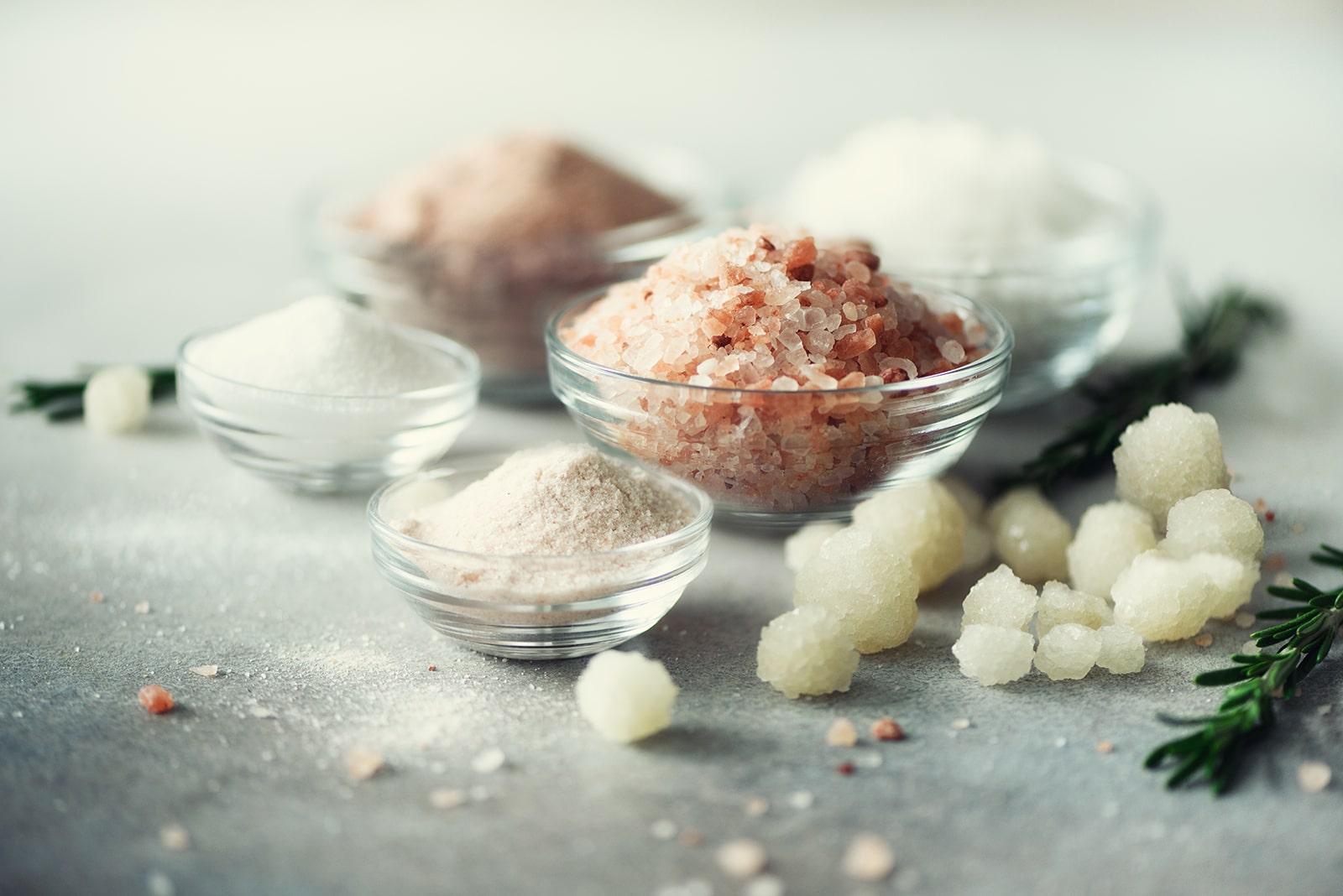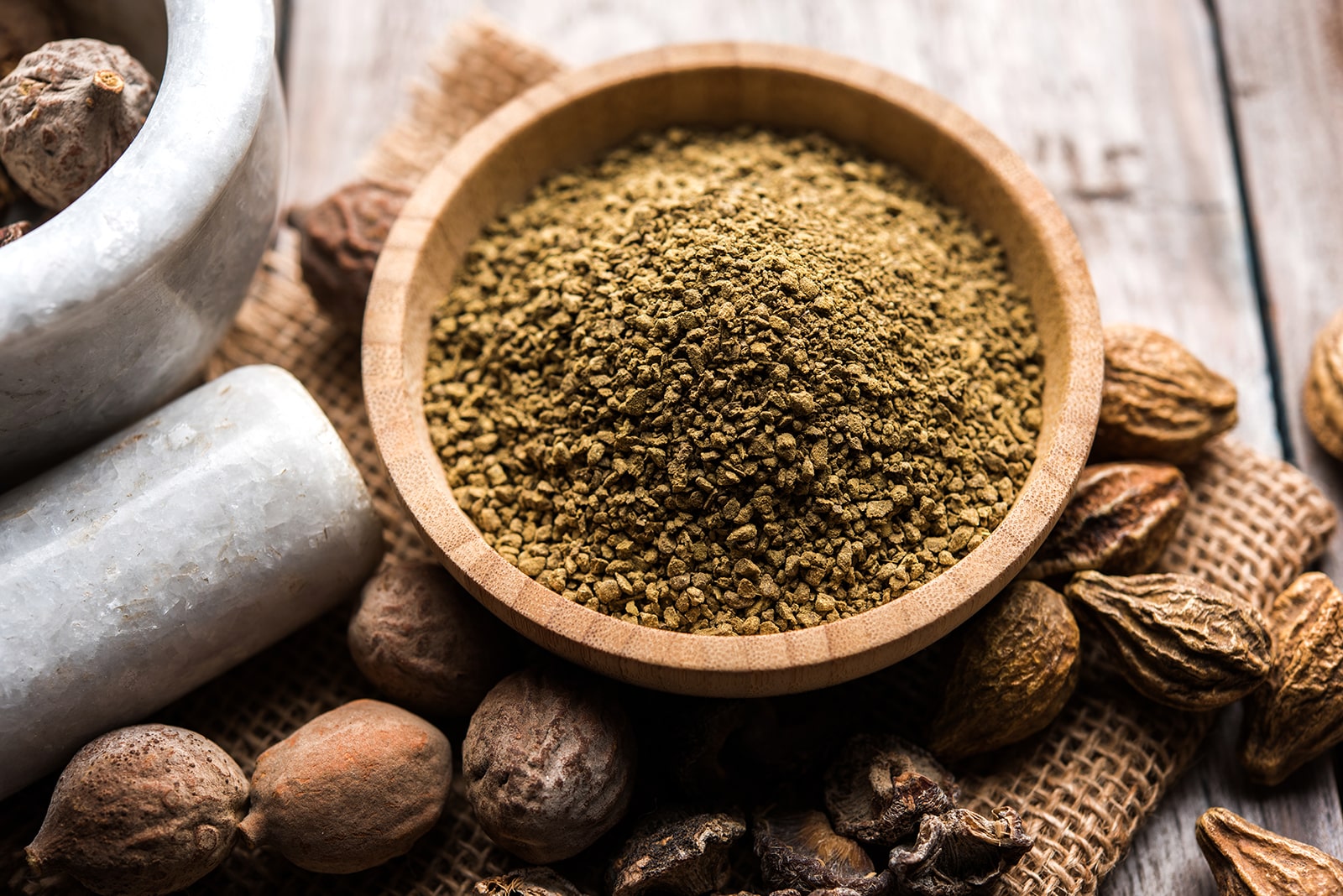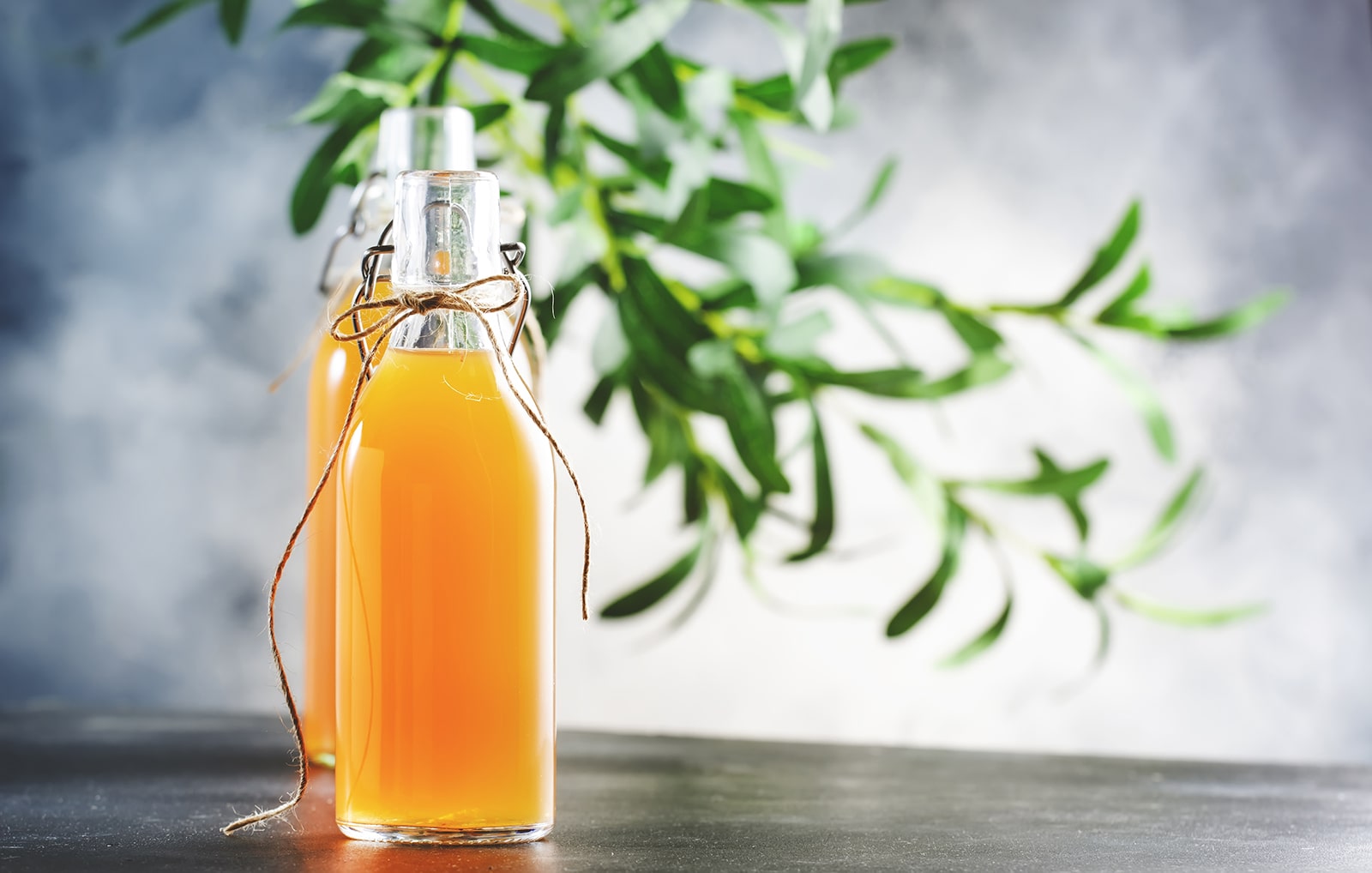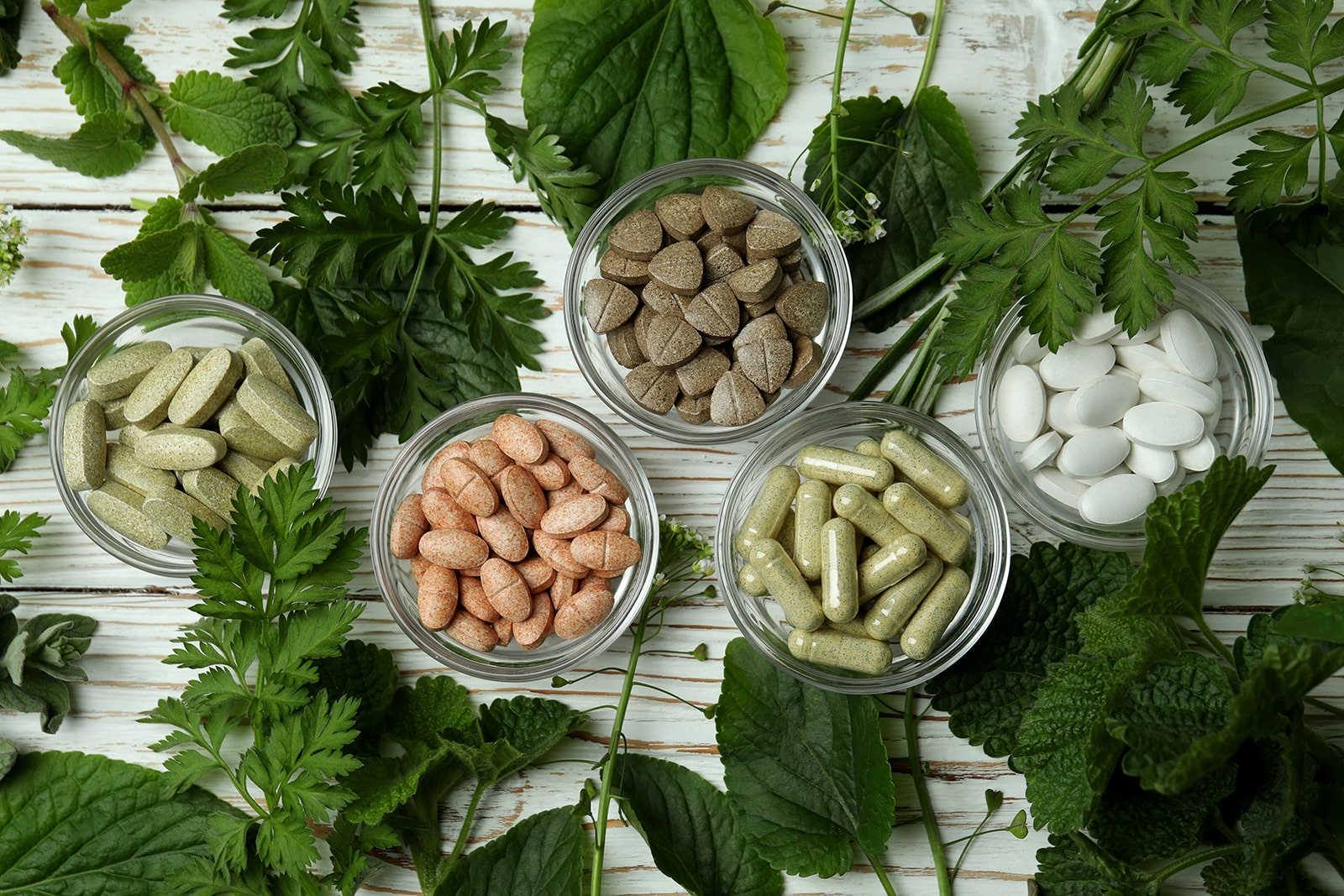Chicken Stock: Slow-Cooker Bone Broth Recipe
Slow-Cooker Chicken Broth Recipe
Chicken broth has been used for generations as a traditional cure-all remedy- known for building strength, energy and immunity. There’s a reason that grandma’s chicken soup seemed to be magic! Turns out the collagen and mineral content in traditionally made broth actually helps fortify bones, teeth and even helps heel the gut and boost our immune producing power.
As always, I recommend organic chicken for this recipe. And, whenever possible, use organic or locally sourced produce for the other ingredients.
Yields: 3 quarts
Prep time: 20 minutes
Cook time: 14 hours 30 minutes
Ingredients:
- 3 pounds bone-in chicken parts and gizzards
- 12 cups filtered water
- 1 tablespoon apple cider vinegar
- 1 yellow onion, peeled and quartered
- 3 large carrots, cut into large dice
- 4 cloves garlic, smashed
- 2 stalks celery with leaves
- 2 bay leaves
- 1 teaspoon sea salt
- 1/2 teaspoon cracked black pepper
- 1 bunch fresh parsley
Directions:
Place the water and chicken parts in a slow cooker and cook on high for 2 hours. Skim off any foam from the surface and remove the chicken. Shred the meat off the bones, and set the meat aside. Return the bones to the pot.
Reduce slow cooker to low. Add all the remaining ingredients, except the parsley, to the pot and cook on low for 12 hours or on high for 6 hours. Turn off the pot, skim the fat off the top, stir in the parsley, and cover for 30 minutes.
Strain the broth through a fine-mesh sieve or cheesecloth. Store in the refrigerator or freezer for later use. You may scoop off any solidified fat before using.
Source: Danielle Walker, AgainstAllGrain.com
Oil Pulling
Oil Pulling
Oil pulling, also known as “kavala” or “gundusha,” is an ancient Ayurvedic dental technique that involves swishing a tablespoon of oil in your mouth on an empty stomach for around 20 minutes. This action is believed to draw out toxins in your body, primarily to improve oral health, but also to improve your overall health.
It might be an ancient health practice, but oil pulling is getting the attention of modern science. Recent studies show that oil pulling helps heal gingivitis, control plaque, and reduce microorganisms that cause bad breath. In a recent WebMD article, Jessica T. Emery, DMD, explains, “Most microorganisms inhabiting the mouth consist of a single cell. Cells are covered with a lipid, or fatty, membrane, which is the cell’s skin. When these cells come into contact with oil, a fat, they naturally adhere to each other.”
Incorporating Oil Pulling into Your Dental Health Routine
- Oil pulling traditionally has used sesame oil, but sunflower and coconut oil are very good to use. Coconut oil in particular has the extra benefit of antimicrobial properties, and may also be more palatable for some people.
- Start with five minutes a day; build up to 20 minutes daily. Swishing with oil is an unusual sensation— from personal experience I can tell you, it will take some time to get used to it. Start with five minutes of daily swishing and increase by one or two minutes daily till you get to twenty.
- Use small amounts of oil. You don’t need a big mouthful for oil pulling to be beneficial. If you find you are swallowing oil (which you should not do), then spit it out and use a smaller amount.
- Continue routine dental care. Oil pulling should not replace routine dental hygiene. Continue to brush, floss, and use mouthwash daily.
Interested in making an antiseptic oil at home? Check out how I use Calendula flower to enhance the benefits of oil pulling.
Resources
Singh, A., and B. Purohit. Tooth Brushing, Oil Pulling, and Tissue Regeneration: A Review of Holistic Approaches to Oral Health. Journal of Ayurveda and Integrative Medicine 2, no. 2 (April 2011): 64–68. doi:10.4103/0975-9476.82525.
WebMD. Should You Try Oil Pulling? Reviewed June 4, 2014. http://www.webmd.com/oral-health/features/oil-pulling
Minerals
Minerals
Minerals are important nutrients in your diet that help the body maintain good health and resist infection—including the mouth and teeth. Minerals are inorganic elements that come from the earth, soil, and water and are absorbed by plants. Animals and humans absorb minerals from the plants they eat.
There are two kinds of minerals—macrominerals and trace minerals—that your body uses within its cells for many different jobs.
Macrominerals are required in larger amounts and are necessary for processes such as building bones, making hormones, contracting muscles, and regulating your heartbeat. They also play a role in brain function. Macrominerals include calcium, phosphorus, magnesium, sodium, potassium, chloride, and sulfur.
Trace minerals, including iron, manganese, copper, iodine, zinc, cobalt, fluoride, and selenium, are needed in much smaller quantities.
Consuming too much or too little of any mineral can have negative effects on health. For most people in good health, a safe range for consumption of minerals has been established (see Resources below). Personal variation comes into play depending on one’s lifestyle, genetics, environment, history of illness, and dietary restrictions.
Conventional wisdom dictates that the best way to get the minerals (and vitamins) your body needs is to eat a balanced diet that includes a wide variety of foods. However, recent research shows that while the vitamin content of food remains relatively stable over time, mineral content is becoming depleted. There are many reasons for this; erosion, farming practices, pollution, and even the way we cook can affect the nutrient density of both conventionally and organically harvested foods. As a result, along with my colleagues, I often recommend mineral supplementation even for someone eating the healthiest diet possible.
Resources
Bionutrient Food Association http://bionutrient.org
Human Performance Resource Center “Food Sources of Minerals.” http://hprc-online.org/nutrition/warfighter-nutrition-guide-chapter-9-1/Food%20Sources%20of%20Minerals.pdf
Recommended Intake and Functions of Minerals http://hprc-online.org/nutrition/warfighter-nutrition-guide-chapter-9-1/Food%20Sources%20of%20Minerals.pdf
Linus Pauling Institute at Oregon State University http://lpi.oregonstate.edu/mic/minerals
References
- Coulston, A., C. Boushey, and M.G. Ferruzzi, eds. Nutrition in the Prevention and Treatment of Disease. Oxford: Academic Press, 2013.
- Davis, D.R. “Declining Fruit and Vegetable Nutrient Composition: What Is the Evidence?” HortScience 44, no. 1 (February 2009): 15-19.
- Foundation for Alternative and Integrative Medicine. “Sustainable Agriculture and Nutrient Dense Foods.” Accessed March 2015. http://www.faim.org/agriculture/
- Kabata-Pendias, A. Trace Elements in Soils and Plants. Boca Raton: CRC Press, 2011.
- Marler, J.B., and J. Wallin. “Human Health, the Nutritional Quality of Harvested Food and Sustainable Farming Systems.” Nutrition Security Institute White Paper. Bellevue: WA, 2006. http://www.nutritionsecurity.org/PDF/NSI_White%20Paper_Web.pdf
- Thomas, D. “A Study on the Mineral Depletion of the Foods Available to Us as a Nation over the Period 1940 to 1991.” Nutrition and Health 17, no. 2 (April 2003): 85-115.
Triphala for Colon Health
Triphala For Colon Health
Constipation and improper elimination seem to be a common issue I see in many of my clients. As a result, many ask for a natural solution. Some may turn to ongoing magnesium supplementation; foods known to move the bowels, such as prunes; and herbs, such as cascara and senna.
Even though they are natural, it’s important to note that there are some potential harmful effects of using cascara and senna on an ongoing basis, as they do not address the cause of constipation. Considered “natural laxatives,” they can create dependence and disrupt peristalsis (the natural contractions of the bowel).
Instead, I often recommend an herbal formula that can be very helpful to relieve constipation and restore normal bowel function over time: Triphala.
This is an Ayurvedic formula made of three herbs: Amalaki (Emblica officinalis), Bibhitaki (Terminalia bellirica), and Haritaki (Terminalia chebula). High in vitamin C, linoleic oil, and other nutrients, Triphala offers nutritional benefits, as well as blood and liver cleansing actions. It contains some anthraquinones that help to stimulate bile flow and peristalsis.
There’s also plenty of scientific research and clinical reports demonstrating that Triphala is an effective blood purifier that stimulates bile secretion as it detoxifies the liver, helps digestion and assimilation, and significantly reduces serum cholesterol and lipid levels throughout the body. As a result, it is regarded as a kind of universal panacea and is one of the most commonly prescribed herbal formulas in India.
As always, addressing the root cause of improper elimination is first and foremost. I also usually recommend keeping the magnesium (glycenate or citrate) supplement. Most people are deficient in this very important mineral anyway, and this may be contributing to the problem. In fact lifestyle and diet can play big role in digestive health and proper elimination. (Learn more about the link between elimination and health here).
If constipation is a chronic issue for you, it might be the right time to address it as part of your overall health. Though there are variations in what is considered “normal” from person to person, it’s not a topic that that should be avoided. Maybe it’s time to discuss the best strategy for you with your a qualified healthcare practitioner knowledgeable in this area, like a nutritionist, Ayurvedic practitioner or acupuncturist.
Resources
- Gowda, D.V., G. Muguli, P.R. Rangesh, and R.D. Deshpande. “Phytochemical and Pharmacological Actions of Triphala: Ayurvedic Formulation – A Review.” International Journal of Pharmaceutical Sciences Review & Research 15, no. 2 (July/August 2012).
- Mukherjee, P.K., et al. “Clinical Study of ‘Triphala’ – A Well Known Phytomedicine from India.” Iranian Journal of Pharmacology & Therapeutics 5, no. 1 (January 2006). http://www.bioline.org.br/pdf?pt06008
- Svoboda, R. Prakriti: Your Ayurvedic Constitution. Lotus Press: 1998.
- Tierra, M. “The Wonders of Triphala: Ayurvedic Formula for Internal Purification.” Accessed February 17, 2015. http://www.planetherbs.com/specific-herbs/the-wonders-of-triphala.html
Homemade Kimchi Recipe
Homemade Kimchi Recipe
Kimchi (aka kimchee or gimchi) is a traditional fermented Korean main dish made of vegetables with a variety of seasonings. It is often described as spicy and sour- and it’s currently one of my favorite add ons to meals. Fermented foods and the good bacteria they contain have long been a mainstay for digestive health in many cultures and traditional diets. (You can learn more about the connection of gut health to overall health here).
There are hundreds of varieties of kimchi made from napa cabbage, radish, scallion, or cucumber as a main ingredient. In traditional preparation, kimchi is fermented in jars stored underground for months.
Kimchi Recipe- Making your own at home.
Ingredients:
- 1 daikon radish or a few red radishes, sliced into half moons
- 2 carrots, sliced into half moons
- 2 green tomatoes or tomatillos, chopped
- 1 medium onion (leeks, scallions, or shallots may be substituted, to taste)
- 6 cloves garlic, peeled and chopped
- 2 medium-size chile peppers (jalapeno for mild heat, habanero for more kick), chopped
- 3 tablespoons freshly grated ginger
- 1 tablespoon any brand Himalayan pink salt
Directions:
- Mix all ingredients in a large bowl. “Massage” the mixture with your hands, grabbing handfuls and squeezing repeatedly until vegetables are wilted and excess water is squeezed out.
- Spoon kimchi mixture into a quart-size jar with a wide mouth. Pack tightly, pressing hard until brine rises; the vegetables must be submerged to avoid mold forming. Loosely cover jar with a lid.
- Allow kimchi to ferment at room temperature for about a week. Each day, press the mixture down to keep vegetables submerged in the brine. The longer it ferments, the more sour it becomes.
- When kimchi has fermented to your taste, store in the refrigerator.
Try using turnips, okra, beans, eggplant, or other favorite vegetables that are in season. Enjoy!
Fermented Foods for Gut Health
Fermented Foods for Gut Health
Fermented foods may be setting trends on The Huffington Post and Mind Body Green, but these nutrient-potent foods have been around for thousands of years in cultures around the world, including Japanese, Chinese, Indian, and German cultures.
For people living without modern medicine and refrigeration, fermentation was a simple means of food preservation and a way to imbue foods with the health-enhancing properties of the live bacteria the gut needs to stay in balance. Fermented foods are a potent source of probiotics, which research has shown are essential to powering up the mucosal immune system in your digestive tract and producing antibodies to pathogens.
Incorporate more of these probiotic powerhouses into your diet is one important way of getting those healthy bacteria back into action in your gut.
Fermented Foods Short List
- Cultured Dairy: Yogurt, kefir, buttermilk, sour cream, some cheeses
- Veggies: Beets, radishes, tomatoes, onions, garlic, kimchi, green beans, sauerkraut
- Condiments fermented at home or commercially: ketchup, relish, salsa, chutney
- Other: Miso, tempeh, tofu, soy sauce
Fermented Food Facts & Tips
- All fermented foods must be kept cool to maintain the live cultures.
- Food labels must be marked “fermented.”
- Fermented and “pasteurized” do not go together. Pasteurization kills live cultures.
- Pickled is not the same as fermented (unless indicated on the label). Pickled foods are soaked in vinegar or brine. This is how many traditionally fermented foods are manufactured these days, like pickles and sauerkraut.
- Choose organic, non-GMO items or locally farmed products. This is especially important in dairy and soy products.
- Unfortunately, if you’re sensitive or allergic to dairy, fermentation does not always make it safe for you to eat. Luckily there are many non-dairy alternatives like fermented coconut and soy products.
- Start with small servings of fermented foods, one to two times a day.
- Toss fermented veggies into salads; enjoy as a snack or as a side dish.
- Add a spoonful or two to your morning smoothie (e.g., beets, kefir).
Wondering if you still need to take a probiotic? Good question! Check out this blog from archives for my thoughts on that.
Resources
- Chilton, S., J. Burton, and G. Reid. “Inclusion of Fermented Foods in Food Guides Around the World.” Abstract. Nutrients 7, no. 1 (January 2015): 390-404. http://www.mdpi.com/2072-6643/7/1/390
- The Huffington Post. Headlines on fermented food trend. http://www.huffingtonpost.com/news/fermented-foods/
- Mercola, J. “Fermented Foods: How to ‘Culture’ Your Way to Good Health.” Accessed February 2015. http://articles.mercola.com/fermented-foods.aspx
- Rawlings, D. Fermented Foods for Health: Use the Power of Probiotic Foods to Improve Your Digestion, Strengthen Your Immunity, and Prevent Illness. Fair Winds Press: 2013.
- Schwenk, D. Cultured Food for Life: How to Make and Serve Delicious Probiotic Foods for Better Health and Wellness. Hay House, Inc.: 2013.
- Williams, D. “Fermented Foods that Boost Digestive Health.” Reviewed February 6, 2014. http://www.drdavidwilliams.com/traditional-fermented-foods-examples/
What Your Bowel Movements Say about Your Health
Poop
Unless you’re the parent of a toddler who has just mastered “going potty,” poop is probably not a hot topic in your household.
But did you know, that frequency aside, the composition of what you deposit into the toilet has important implications for health? Features —such as the size, color, shape, odor, and consistency indicate how well the gastrointestinal (GI) tract is functioning. Those same features also provide clues about how your body is (or isn’t) faring against threats of infection and more serious diseases like celiac disease, hepatitis, urinary tract infections, malabsorption disorders, inflammatory bowel disease, pancreatitis, and cancer.
To give you an idea of what healthy, normal stool looks like, check out the Bristol Stool Chart to the right (warning: if you’re having lunch right now you might wanna skip this part ![]()
The healthy range for fecal matter is of a consistency that is not too hard, not too soft, and mostly solid.
-As opposed to lumpy, pellet-like, or liquid. Normal stool color is in the light-to-medium brown range and is not offensively odorous. Also, bowel movements (BMs) should pass easily from your body to the toilet.
5 BMs that Require Medical Attention
Unless you are aware of dietary changes or a medication that could produce the following types of stool, it’s advisable to seek medical attention if you observe the following changes in BMs.
- Stool that is hard to pass, requires straining, or is accompanied by abdominal pain.
- Black, tarry stool might indicate infection or GI bleeding, while bright red stool could indicate infection and/or bleeding in the GI tract or anus. Seek immediate medical attention.
- White, pale, or grey stool could indicate problems with the liver, bile ducts, or pancreas.
- Yellow stool could indicate serious infection or gallbladder problems.
- Mucus in the stool can indicate inflammation, infection, or even cancer.
How Often Should You Go?
How frequently you have a BM is important, too. And, what’s typical for you may be different for other people in your family. For most people, three weekly BMs are considered the norm. No matter how often you poop, you should not have to strain or experience pain while excreting. Additionally, be aware that the appearance and frequency of BMs will vary based on what’s in your diet, sleep and exercise patterns, hormonal changes, travel, stress, hydration level, medications or supplements you are taking, and exposure to toxins (from nicotine to industrial toxins).
How Low Should You Go?
There’s also evidence that the position you take to evacuate the bowels has health implications for the physical structures of the GI tract. So much so that some scientists indicate sitting to poop is a contributing factor in the development of colon and pelvic diseases. Before potty training, young children squat to poop in their diapers—they don’t sit. Yes, there’s a difference between squatting and sitting. The modern toilet places the thighs at a 90-degree angle to the abdomen, whereas squatting has a much deeper angle that gives more motility to the intestinal muscles and organs. Evacuating the bowels is much easier on the body in the squatting versus seated position. Toilet position should be a consideration for everyone over the age of five, but is especially important for the elderly, the disabled, and individuals with compromised mobility.
You can learn more about toilet position in this video from Squatty Potty
Need a little help in this department? Curious how your digestive health and elimination habits could be effecting your health? Contact me for information about a consultation today.
Resources:
- Mercola, J. “What You See in the Toilet Can Give You Valuable Insights into Your Health.” Accessed February 2015. http://articles.mercola.com/sites/articles/archive/2013/02/14/normal-stool.aspx
- Monastyrsky, K. “Gut Sense: What Exactly Are Normal Stools?” Accessed February 2015. http://www.gutsense.org/constipation/normal_stools.html
- Sikirov, D. “Comparison of Straining During Defecation in Three Positions: Results and Implications for Human Health.” Abstract. Digestive Diseases and Sciences 48, no. 7 (July 2003): 1201-5. http://www.ncbi.nlm.nih.gov/pubmed/12870773
- Step and Go. “Step and Go Ergonomically Correct Toilet Position.” Accessed February 2015. http://www.stepandgo.com
Supplement Safety: Avoiding Fraudulent Herbs
Nationally recognized store chains, Walgreens, GNC, Walmart and Target came under fire a few weeks ago after third part testing revealed that the supplements being sold under store brand label were mislabeled, meaning they either listed ingredients that were not in the formula or contained ingredients that were not listed on the label.
This is scary!
It brings to light some underhanded actions by three very well known companies with huge customer reach. If they’re being deceptive, then who else might be deceiving us?
I can’t say I was completely surprised. Supplement safety is something I’m pretty vocal about. I’ve often coived my opinion on many over-the-counter supplements sold with little or no quality control verification. But I was shocked by the extent of the falsification.
Here are some of the discrepancies uncovered via DNA testing done at Clarkson University in Potsdam, NY by Dr. James A. Schulte II (as reported by the attorney general Eric Schneiderman’s office):
GNC:
- Six “Herbal Plus” brand herbal supplements per store were purchased and analyzed: Gingko Biloba, St. John’s Wort, Ginseng, Garlic, Echinacea, and Saw Palmetto. Purchased from four locations with representative stores in Binghamton, Harlem, Plattsburgh & Suffolk.
- Only one supplement consistently tested for its labeled contents: Garlic. One bottle of Saw Palmetto tested positive for containing DNA from the saw palmetto plant, while three others did not. The remaining four supplement types yielded mixed results, but none revealed DNA from the labeled herb.
- Of 120 DNA tests run on 24 bottles of the herbal products purchased, DNA matched label identification 22% of the time.
- Contaminants identified included asparagus, rice, primrose, alfalfa/clover, spruce, ranuncula, houseplant, allium, legume, saw palmetto, and Echinacea.
Target:
- Six “Up & Up” brand herbal supplements per store were purchased and analyzed: Gingko Biloba, St. John’s Wort, Valerian Root, Garlic, Echinacea, and Saw Palmetto. Purchased from three locations with representative stores in Nassau County, Poughkeepsie, and Syracuse.
- Three supplements showed nearly consistent presence of the labeled contents: Echinacea (with one sample identifying rice), Garlic, and Saw Palmetto. The remaining three supplements did not revealed DNA from the labeled herb.
- Of 90 DNA tests run on 18 bottles of the herbal products purchased, DNA matched label identification 41% of the time.
- Contaminants identified included allium, French bean, asparagus, pea, wild carrot and saw palmetto.
Walgreens:
- Six “Finest Nutrition” brand herbal supplements per store were purchased and analyzed: Gingko Biloba, St. John’s Wort, Ginseng, Garlic, Echinacea, and Saw Palmetto. Purchased from three locations with representative stores in Brooklyn, Rochester and Watertown.
- Only one supplement consistently tested for its labeled contents: Saw Palmetto. The remaining five supplements yielded mixed results, with one sample of garlic showing appropriate DNA. The other bottles yielded no DNA from the labeled herb.
- Of the 90 DNA test run on 18 bottles of herbal products purchased, DNA matched label representation 18% of the time.
- Contaminants identified included allium, rice, wheat, palm, daisy, and dracaena (houseplant).
Walmart:
- Six “Spring Valley” brand herbal supplements per store were purchased and analyzed: Gingko Biloba, St. John’s Wort, Ginseng, Garlic, Echinacea, and Saw Palmetto. Purchased from three geographic locations with representative stores in Buffalo, Utica and Westchester.
- None of the supplements tested consistently revealed DNA from the labeled herb. One bottle of garlic had a minimal showing of garlic DNA, as did one bottle of Saw Palmetto. All remaining bottles failed to produce DNA verifying the labeled herb.
- Of the 90 DNA test run on 18 bottles of herbal products purchased, DNA matched label representation 4% of the time. Contaminants identified included allium, pine, wheat/grass, rice mustard, citrus, dracaena (houseplant), and cassava (tropical tree root).
This is a BIG deal.
You might be wondering, “How this could happen?” Who’s been watching out for the quality of herbals and our supplement safety? Well the fact is, though the FDA has very strict guidelines outlining what can or cannot be printed on a label, there’s no federal enforcing agency to make sure that those supplements are as safe or effective as the consumer maybe lead to believe.
Supplements are a $30 billion dollar a year industry. It’s no wonder that these huge retailers want to maximize on sales in this arena. However, what they did was not only misleading, it could have potentially been dangerous.
The retailers were ordered to cease and desist, and if you have any of these supplements at home you should be aware of the potential for contamination.
This doesn’t necessarily mean that you should stop taking your supplements, but it does mean that you should start really considering the brand and sources you choose. Though not required by the FDA, many more reputable brands have taken the extra steps to acquire third part certifications of their manufacturing practices.
Good Manufacturing Practices (GMP) have been developed by the FDA and are accredited, third party institutions who are entrusted to review a manufacturer’s process, standards and efficacy to certify and allow them to carry their seal. There are a few highly respected certifications to look out for on your supplement label. It’s important to look for independent third party certification of GMP to ensure non-bias.
Natural Product Association (NPA)
According to the website:
NPA has always taken a leadership role in promoting quality standards and has developed proactive certification programs for that purpose. NPA was the first organization to offer a third-party GMP certification program for the manufacturing of dietary supplements and dietary ingredients.
Manufacturers looking to apply for GMP certification through NPA must comply with standards set forth: “NPA GMP Certification is awarded to companies that meet a high level of compliance to the NPA GMP Standard as verified through comprehensive third-party inspections of facilities and GMP-related documentation.”
NSF International
NSF has a 7-step review process to certify a product. According to the site, “NSF accredited third-party certification provides all stakeholders – industry, regulators, users and the general public – assurance that a certified product, material, component or service complies with the technical requirements of the referenced standard.” NSF is an international accreditation association.
Find out more information about the various agencies that accredit NSF at http://www.nsf.org/about-nsf/accreditations/.
Therapeutic Goods Administration (TGA)
TGA is an Australian based agency that regulates “supply, import, export, manufacturing and advertising of therapeutic goods.” Therapeutic goods are defined as anything from medication and supplements to medical devices and even first aid supplies. They provide information and education for both consumers and healthcare professionals. They also provide a forum for consumers to report problems.
Consumer Labs (CL)
Another fantastic resource of independent testing and data is Consumer Labs. They provide reports on testing of health and nutrition products, prescriptions, sports and energy products, functional foods, food, beverages and personal care products. It’s a comprehensive and object third party that uses the FDA’s GMP quality standards as a baseline for evaluating products.
So should I keep taking my supplements?
When it comes right down to it–if you are taking any of the store brand supplements listed above, I’d recommend you discontinue using them. In fact, this might be a perfect opportunity to evaluate the products that you’re using.
- Are your supplements certified by a third party for GMP?
- Do they list any artificial ingredients or preservatives?
- Is there a certification ensuring purity?
- Are all the ingredients listed or are they hiding behind the veil of “proprietary blend”?
Better yet, review your supplements with an herbalist, nutritionist or pharmacist who’s familiar with GMP standards and product certifications.
I believe that it’s important to have alternatives to pharmaceuticals, and to hold the manufactures of these nutraceuticals to a high standard. When used properly, natural botanicals and supplements can offer a much needed and safer alternative to help people heal. However, it’s up to us as healthcare providers to help the consumer navigate the sea of products available and advocate for safer, more effective standards.
That’s why I’m here to help.
Lastly, I’d like to leave you with the following excerpt from the book 21st Century Herbal by Michael Balick:
Herbal medicine is ancient, and it gave birth to the modern sciences of botany, pharmacy, perfumery, and chemistry. Some of our most useful and beneficial medicines originate from plants, including aspirin (salicylic acid derivatives from willow bark and meadowsweet), quinine (from cinchona bark), digoxin (from foxglove), and morphine (from opium poppy). Just 100 years ago, the United States Pharmacopeia was filled with plant-based drugs, but today, few physicians are well versed in botany and few botanists deeply understand medicine.
This is unfortunate because there are times when an herbal remedy could offer a safer alternative. The flowers have been used for centuries as a gentle calm-ative for young and old alike. It is non-habit-forming and well tolerated. A study sponsored by the University of Michigan found that chamomile extract had roughly the same efficacy as many prescription sleeping medications when given to adults with insomnia. Peppermint oil has been shown to be as effective as pharmaceutical drugs for relieving irritable bowel syndrome, but without the ofttimes dangerous side effects. Clinical studies have shown that ginger relieves morning sickness, sage can relieve a sore throat, and hibiscus tea gently lowers blood pressure. I believe it’s better to use mild remedies for minor health problems and save the more potent, and risky, prescription medications for more serious conditions.
Sometimes an herb can fill a niche for which there is no pharmaceutical equivalent. Milk thistle is a classic example. Numerous scientific studies show that the extract can prevent liver damage caused by environmental toxins, alcohol, and medications like acetaminophen (Tylenol). A Columbia University study of children with acute lymphoblastic leukemia (ALL) found that milk thistle could reverse the liver toxicity that resulted from chemotherapy, allowing children to receive their treatments on time. Milk thistle protects the liver without interfering with the effectiveness of medications— and nothing currently in our modern pharmacy can match it. Some herbal remedies (such as the antidepressant St. John’s wort), however, can interact with medications. So if you’re taking a prescription medication, talk to your pharmacist and/ or health-care provider before you take any herbal remedy or dietary supplement.
Consumers want to know about alternatives to conventional approaches; health-care practitioners and pharmacists should be able to answer their questions and provide appropriate guidance.
—Tieraona Low Dog, MD
Wondering what supplements are right (and safe) for you? Schedule a Supplement Overhaul and we’ll review your health profile, discuss your best options and compile a program just for you. Email me today if you have any questions!
How Good Digestion Can Improve Overall Health
Good Digestion: The Foundation of Good Health
So much emerging research has come up recently connecting the integrity of the gastrointestinal tract (GI) with many health concerns. Most notable are these articles on depression here and here, this one on dementia, and this on risk associated with cardiovascular disease.
This doesn’t even scratch the surface – but hopefully starts to give you an idea of the interrelationship between the health of your digestion and, well just about everything else.
Conditions associated with poor gut health
- Frequent colds
- Seasonal allergies
- Weight gain and bloating
- PMS or PCOS
- Skin conditions like acne, eczema or psoriasis
- Brain fog/difficulty concentrating
- Depression/anxiety
- Food sensitivities
- Autoimmune disease
- Metabolic syndrome
- Thyroid imbalance
The Gastrointestinal Tract (GI)
The GI’s main purpose is obviously digestion. However it also serves as a barrier. The intestinal wall serves as a barrier keeping toxins, bacteria and viruses out of circulation. Intestinal permeability (AKA Leaky Gut Syndrome) occurs when inflammation causes “leaks” or gaps in the gut membrane which then allows passage of toxic substances into the body. This also compromises the integrity of good bacteria that lines the gut. Furthermore, 80% of the body’s immunity is produced in the gut. Compromises in the gut lining, bacterial flora and inflammation are responsible for augmented immune response. This ultimately leads to many health problems listed above.
6 Strategies to improve digestion and prevent “leaky gut”
- Enlist nutritional support by a nutritionist or someone trained in dietary gut restoration therapy.
- Eat a whole food based diet and avoid pesticide and antibiotic exposed foods
- Balance microflora (“good” bacteria)by increasing intake of good bacteria either through fermented foods or a high quality probiotic.
- Limit use of gut damaging medications like proton pump inhibitors (Prilosec), NSAIDS (Ibuprofen), or steroids (prednisone), to name a few.
- Minimize use of alcohol, caffeine, processed foods and additives since they cause inflammation to the gut lining.
- Manage stress – left unchecked, stress is one of the best ways to increase acidity in the gut and cause more damage to the mucosal lining.
Healthy digestion workshop
Join me at Yoga in the Heights on Sunday February 22nd for a workshop dedicated to exploring the connection between gut health, digestion and good health. We’ll learn some important dietary techniques to maintain healthy GI function improve digestion and prevent chronic disease.
- Learn about important links between the gut and overall health
- Learn what steps to take to healing your gut and improving digestion
- Find relief from bothersome or embarrassing symptoms of poor digestion
Have more questions or want to learn more about February’s Nutrition Event? Contact me anytime!
Basic Nutrition 101
Basic Nutrition 101
Probably one of the most common questions I get as a nutritionist is, “what should I be eating?”
The majority of people I talk to realize they need to pay better attention to what they’re putting into their body. However, many are confused as to what constitutes a balanced diet. And with so much conflicting, confusing and misleading information out there, I can’t blame anyone for being fuzzy on the requirements of basic nutrition.
In order to understand what comprises a “good diet,” there are 3 components that need to be considered: Macro-, Micro- and Phyto-nutrients.
Macronutrients
Consider these guys like the foundation of a building. These provide energy and primary building blocks needed by the body. A certain balance is necessary for organ function and muscle building.
- Protein
- Carbohydrates
- Fat
The amount of energy derived from here is measured in a unit called the calorie– which according to the diet industry, is the enemy. The amount of energy each individual needs varies from one person to another based on a variety of factors including genetics, activity level, body mass and metabolic level.
Micronutrients
Just because they’re “micro” doesn’t mean they’re not important; they are vital for proper body function. They are involved in everything from immunity, muscle function, bone integrity, cell regeneration, nerve function and much, much more!
- Vitamins– Include Vitamins A, B, C, D, E etc…
- Minerals– Calcium, iron, magnesium etc…
- Trace Elements– Zinc, Selenium, Manganese etc…
The distinction between macro- and micronutrients explains how someone can be overweight (too many macro-nutrients) but still be malnourished (lack of micro-nutrients). The standard American diet (SAD) is full of junk and processed food is full of calories, but they’re empty calories with little if any vitamins or minerals.
Phytonutrients
These work like scavengers, responsible for correcting DNA and cell malfunction that lead to chronic disease. Studies show that increased amounts of phytonutrients in our diet can improve immune function, detoxify, prevent disease (like heart disease and asthma) as well as prevent and fight cancer. Phytonutrients are the colorful component of fruits and veggies- the more colorful your diet the better!
- Found in Fruits and Veggies
- Include reservatrol, lycopene, chlorophyll, flavenoids etc
- Various colors are indicative of various kinds of phytonutrients. This is why variety in your diet is so important!
- May be supplemented by powder or tablet form; however a good source is vital! Fresh, organic food is always best.
Seems pretty straight forward, right?
Make sure you have all these components in high quality on a daily basis and viola! You have a great diet!
But who are we kidding? I realize it’s not that simple. With work, family and day-to-day stress many of us let one (or more) of these vital components go. Before you know it, you’re skipping breakfast on a regular basis or no more veggies at lunch. Besides getting it all in, choosing the right sources are vital, understanding the value of organic farming, non-GMO sources, grass-fed beef or hormone-free poultry and dairy is also important.
It may take some time and effort… But learning to eat this way can change your life!
Making slow and steady changes is the best way to make it stick. This blog is meant to help you learn how to implement them. That’s why, over the course of the next several weeks, we’ll be exploring various nutrients in detail and where you can add them in your diet.
But don’t be afraid to ask for help! Working with a nutritionist or Health Coach can be invaluable to helping you succeed. Contact me for a consultation.
I want to hear from you!
When you are trying to incorporate better basic nutrition into your life, what’s the main obstacle you face?










